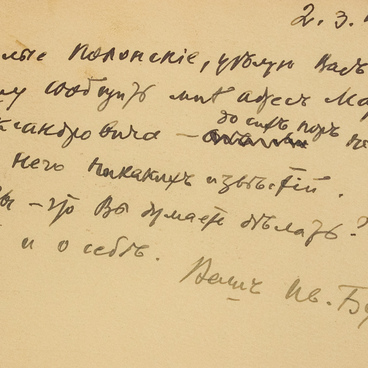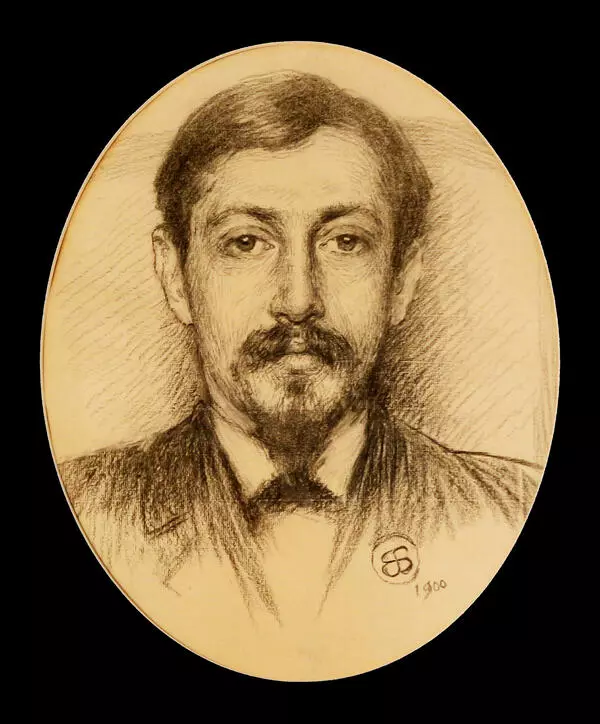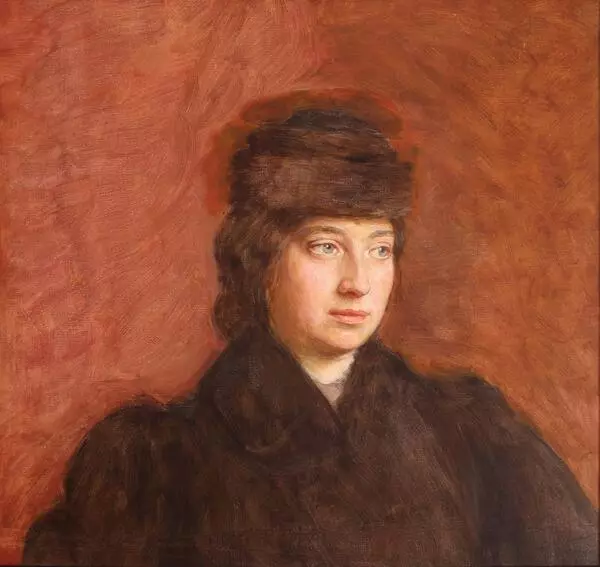Odessa artist Evgeny Bukovetsky depicted the house where Ivan Bunin lived before emigrating. The writer and his wife arrived in Odessa from Moscow on June 16, 1918, fleeing the revolution that starkly changed the capital. The family first lived at Shishkin’s dacha (country house) near Big Fountain, and in October of that year they moved to the mansion of Bukovetsky in Knyazheskaya Street. Their friend offered the escapees three lower rooms — this part of the house is depicted on the painting.
Bukovetsky received a sizeable inheritance from his father. After his return from Europe to Odessa, he sold his business and built a new mansion near a revenue house. The Literary and Artistic Society of Odessa and the Society of South Russian Artists (SSRA) gathered there. Bukovetsky was always hospitable and once a week arranged “parties for boys” for his friends, writers, artists and painters. Alexander Kuprin, Maximilian Voloshin, Alexey Tolstoy, Korney Chukovsky, Kiriak Kostandi and other prominent writers enjoyed their evenings here.
Since 1896, Ivan Bunin regularly visited Odessa. Most often he stayed at the cottage of Odessa painter Alexander Fyodorov and at the house of Evgeny Bukovetsky — they had a very close friendship.
Interaction with artists strongly influenced Bunin’s creative style: it helped him to capture the nuances of life through the eyes of painters. Protagonists of many of his books were often artists, for instance ‘Mad Artist’, ‘Muza’ (‘Muse’), ‘Galya Ganskaya’, ‘Rusya’, ‘Second coffee pot’, ‘Swing’.
Here, in Bukovetsky’s house, Bunin keenly felt the contrast between old tsarist Russia and the new country. The atmosphere of peace and harmony in this “wonderful mansion” was strikingly different from the disturbing, destructive energy of the revolution. This contrast largely influenced the creation of the book “Cursed Days”, compiled of diaries and notes he made in Odessa, while staying in the Bukovetsky’s house.
Writer Valentin Kataev described the last place Bunin’s stayed at in Russia in his story “The Grass of Oblivion”:
Bukovetsky received a sizeable inheritance from his father. After his return from Europe to Odessa, he sold his business and built a new mansion near a revenue house. The Literary and Artistic Society of Odessa and the Society of South Russian Artists (SSRA) gathered there. Bukovetsky was always hospitable and once a week arranged “parties for boys” for his friends, writers, artists and painters. Alexander Kuprin, Maximilian Voloshin, Alexey Tolstoy, Korney Chukovsky, Kiriak Kostandi and other prominent writers enjoyed their evenings here.
Since 1896, Ivan Bunin regularly visited Odessa. Most often he stayed at the cottage of Odessa painter Alexander Fyodorov and at the house of Evgeny Bukovetsky — they had a very close friendship.
Interaction with artists strongly influenced Bunin’s creative style: it helped him to capture the nuances of life through the eyes of painters. Protagonists of many of his books were often artists, for instance ‘Mad Artist’, ‘Muza’ (‘Muse’), ‘Galya Ganskaya’, ‘Rusya’, ‘Second coffee pot’, ‘Swing’.
Here, in Bukovetsky’s house, Bunin keenly felt the contrast between old tsarist Russia and the new country. The atmosphere of peace and harmony in this “wonderful mansion” was strikingly different from the disturbing, destructive energy of the revolution. This contrast largely influenced the creation of the book “Cursed Days”, compiled of diaries and notes he made in Odessa, while staying in the Bukovetsky’s house.
Writer Valentin Kataev described the last place Bunin’s stayed at in Russia in his story “The Grass of Oblivion”:



